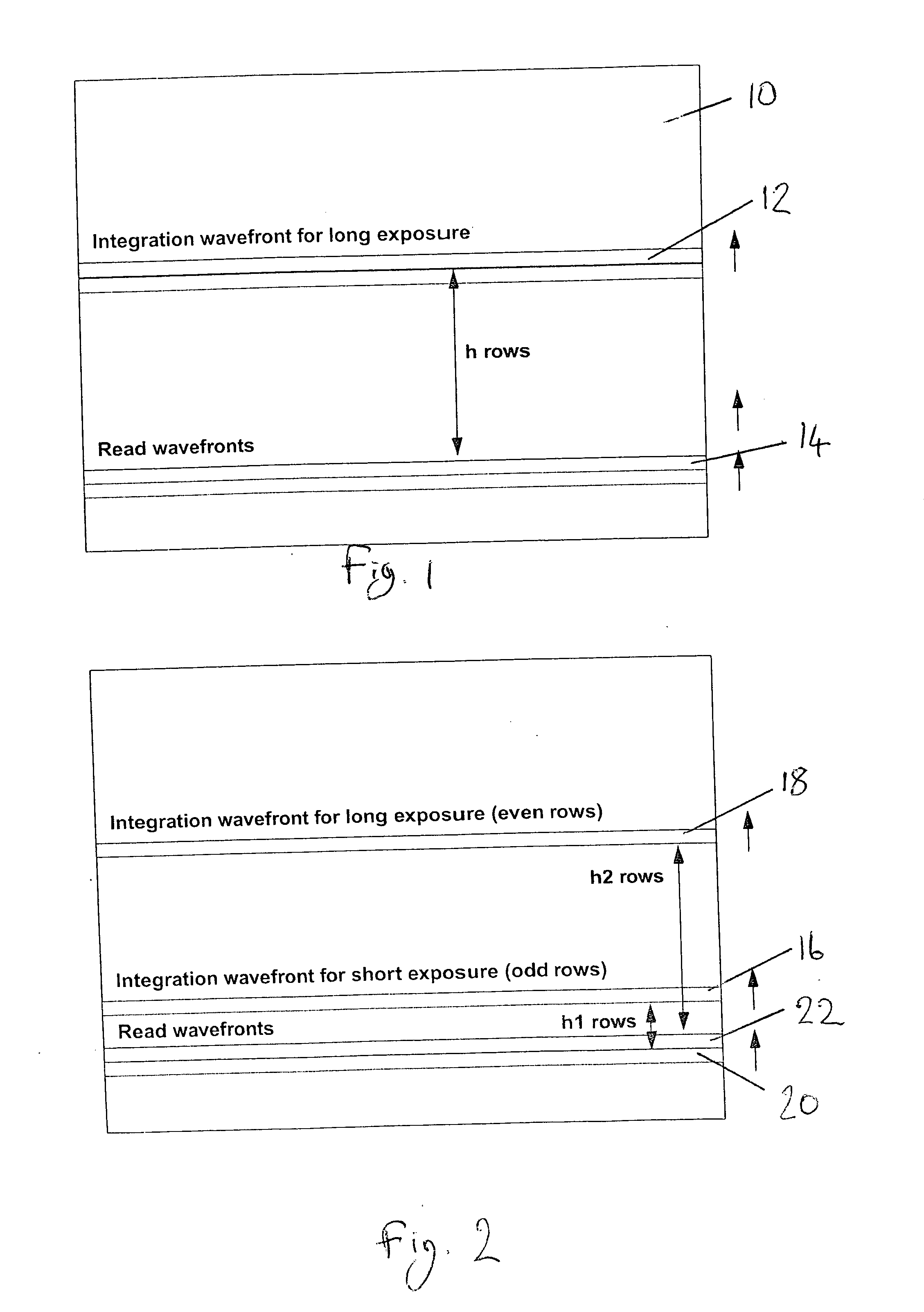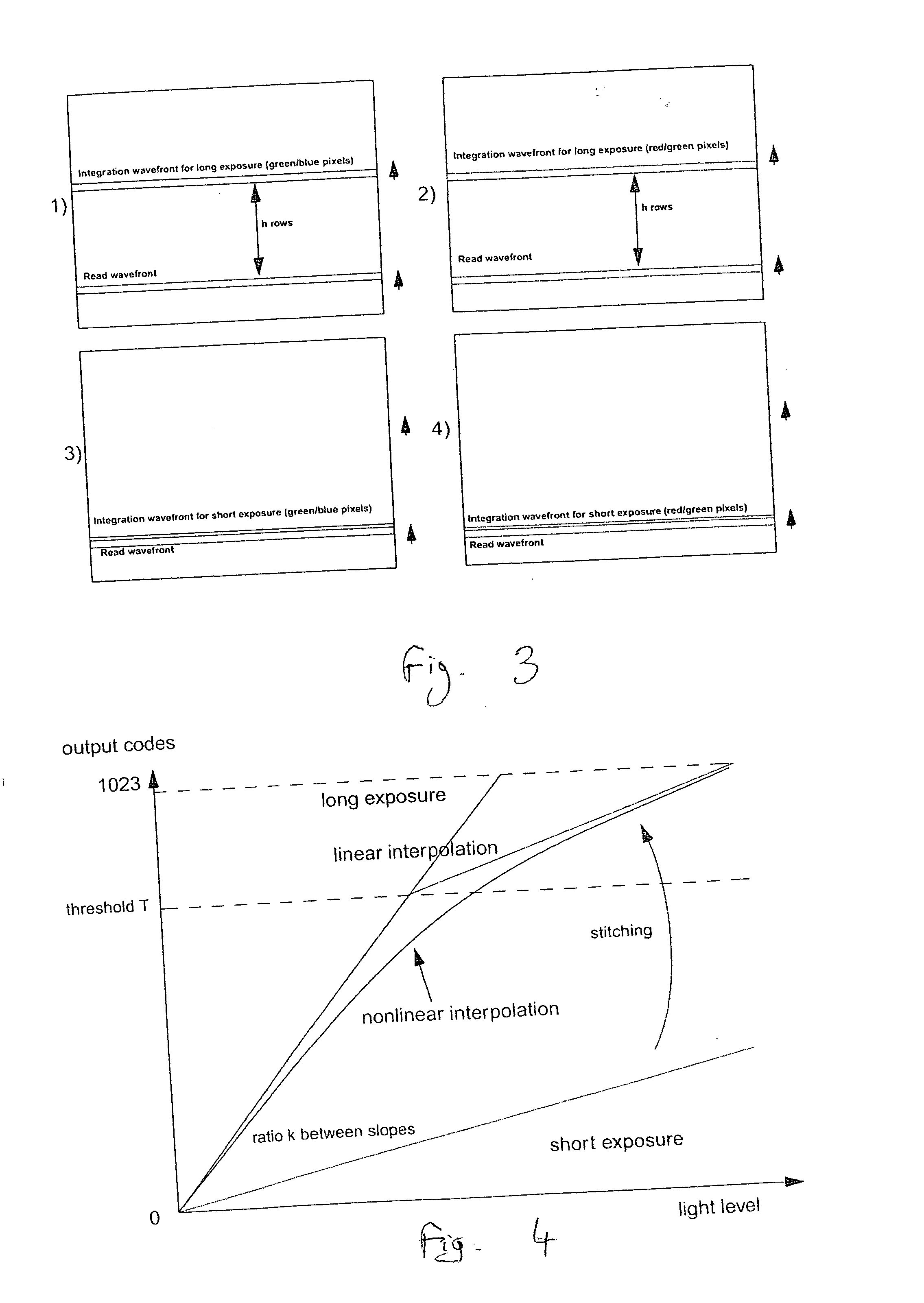Image sensors
a technology of image sensor and sensor, applied in the field of image sensor, can solve the problems of high fixed pattern noise (fpn) and other operational noise levels, loss of detail in these clipped areas, and increased system complexity for calibration purposes
- Summary
- Abstract
- Description
- Claims
- Application Information
AI Technical Summary
Benefits of technology
Problems solved by technology
Method used
Image
Examples
Embodiment Construction
[0024] The scheme shown in FIG. 2 is a means of obtaining extended dynamic range from an image at the expense of lower spatial resolution. A first integration wavefront 16 and a second integration wavefront 18 operate in a rolling blade fashion. Odd lines of the image have a first exposure h1, i.e. there are h1 rows between the first integration wavefront 16 and its corresponding read wavefront 20 and even lines have a second exposure h2, i.e. there are h2 rows between the second integration wavefront 18 and its corresponding read wavefront 22. One exposure (here, h1) is shorter than the other. The ratio between the long and short exposure can be fixed, i.e. h2=kh1.
[0025] This illustrated embodiment can also make use of the concept of fine exposure, whereby the short exposure h1 can be adjusted as a fraction of a line time rather than in integer multiples. Thus the integration wavefront occurs within the previous line being read out. The integration point can be adjusted by single ...
PUM
 Login to View More
Login to View More Abstract
Description
Claims
Application Information
 Login to View More
Login to View More - R&D
- Intellectual Property
- Life Sciences
- Materials
- Tech Scout
- Unparalleled Data Quality
- Higher Quality Content
- 60% Fewer Hallucinations
Browse by: Latest US Patents, China's latest patents, Technical Efficacy Thesaurus, Application Domain, Technology Topic, Popular Technical Reports.
© 2025 PatSnap. All rights reserved.Legal|Privacy policy|Modern Slavery Act Transparency Statement|Sitemap|About US| Contact US: help@patsnap.com



